The weavers of South Africa weave not only intricate nests but also a fascinating narrative within the diverse ecosystems of the region.
Renowned for their exceptional nest-building skills and vibrant plumage, these avian artisans contribute significantly to the rich tapestry of South African biodiversity.
As we explore the intricate lives of these birds, we unravel a story of adaptation, survival, and ecological harmony.
From the Cape Weaver’s intricate hanging nests to the Sociable Weaver’s colossal communal colonies, each species brings its unique flair to the natural canvas of South Africa.
Nestled in varied habitats, from the lush grasslands to the open woodlands, the weavers showcase a spectrum of colors and behaviors. Their presence is not only an aesthetic delight but a crucial element in maintaining the ecological balance.
This exploration into the world of South African weavers unveils the artistry behind their nests, the brilliance of their plumage, and the indispensable role they play in shaping the vibrant landscapes of this captivating region.
11 Weavers of South Africa
Let’s start a journey to discover the intricate lives and contributions of the weavers that grace the skies and trees of South Africa.
1. Thick-billed Weaver (Amblyospiza albifrons)
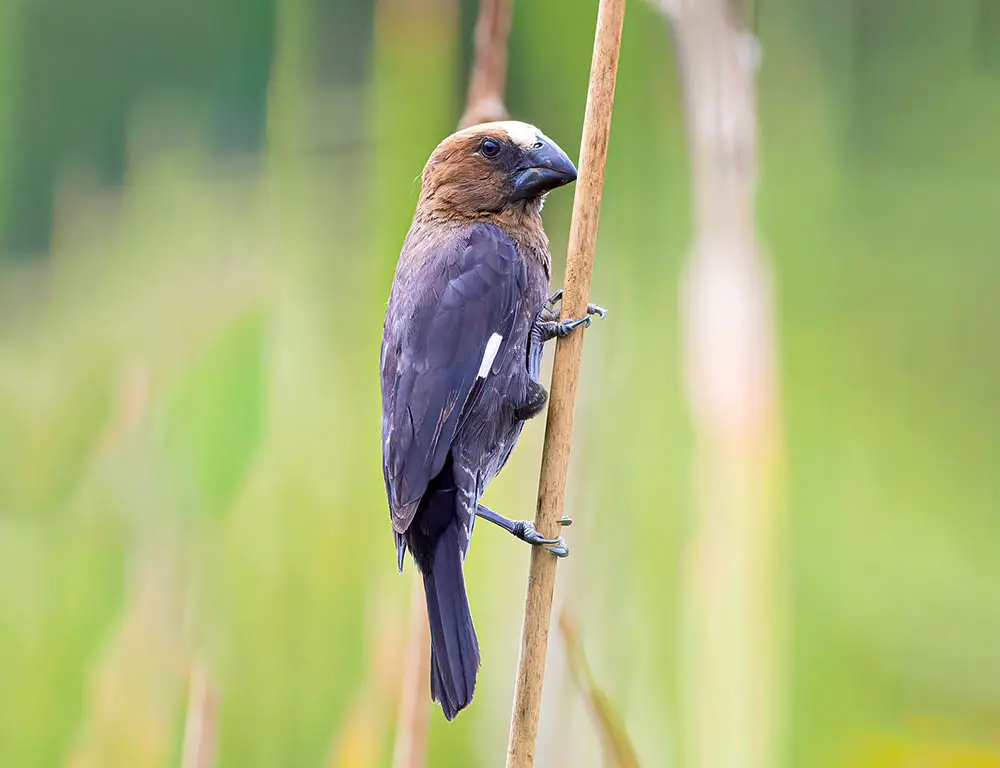
- Scientific name: Amblyospiza albifrons
- Life span: Approximately 4-5 years
- Size: 13-15 cm
- Weight: 20-35 grams
- Wingspan: 22-25 cm
- Status: Least Concern
Thick-billed Weavers are skilled builders, creating intricate nests. These birds inhabit dense grasslands and are often found near water sources.
They have a distinctive yellow eye-ring and a thick bill, and males exhibit a black face mask during the breeding season.
Thick-billed Weavers predominantly feed on grass seeds and insects. They forage on the ground and in low vegetation, using their strong bills to extract seeds.
The Thick-billed Weaver is characterized by its stout bill and distinctive plumage, often displaying a mix of brown, black, and white. These birds are skilled nest builders, creating intricate woven structures suspended from branches.
2. Cape Weaver (Ploceus capensis)
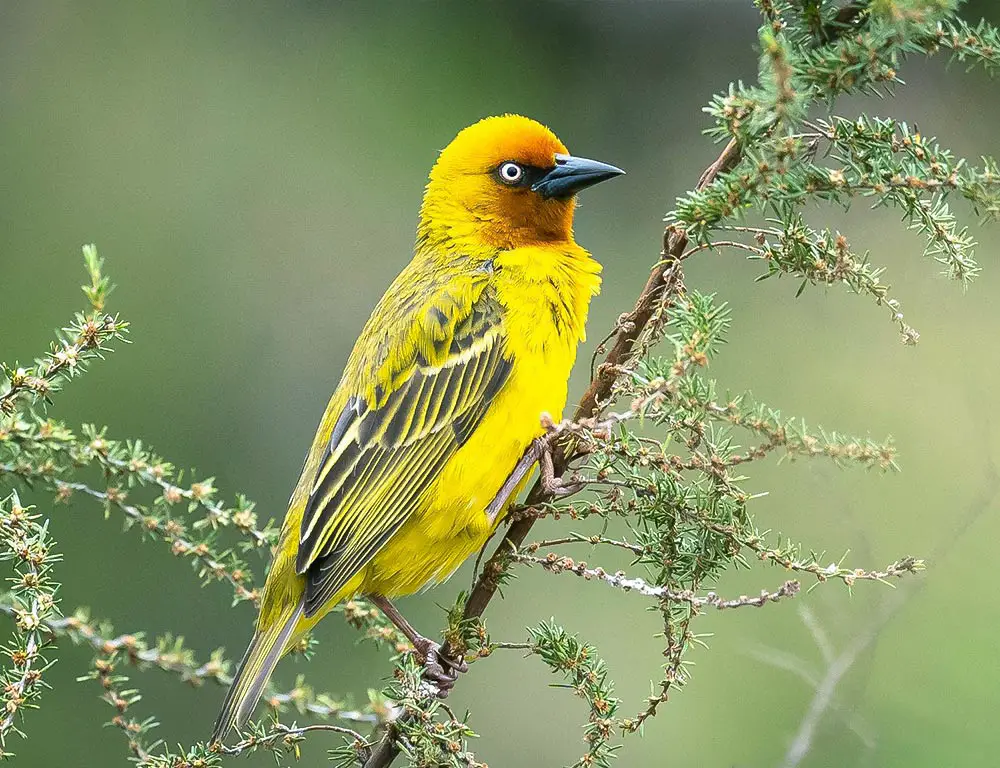
- Scientific name: Ploceus capensis
- Life span: 7-9 years
- Size: 18-20 cm
- Weight: 25-40 grams
- Wingspan: 28-32 cm
- Status: Least Concern
Cape Weavers are known for their distinctive bright yellow plumage and are highly social birds. They construct elaborate, ball-shaped nests with a side entrance, typically located in trees or reeds.
Cape Weavers are primarily seed eaters, but they also consume insects. These birds often form large colonies, and their nests are a common sight in the trees of their habitats.
Males are particularly notable for their bright yellow plumage during the breeding season, creating eye-catching displays. They are known for their intricate nest-building skills, constructing elaborate hanging nests in colonies.
3. Sociable Weaver (Philetairus socius)
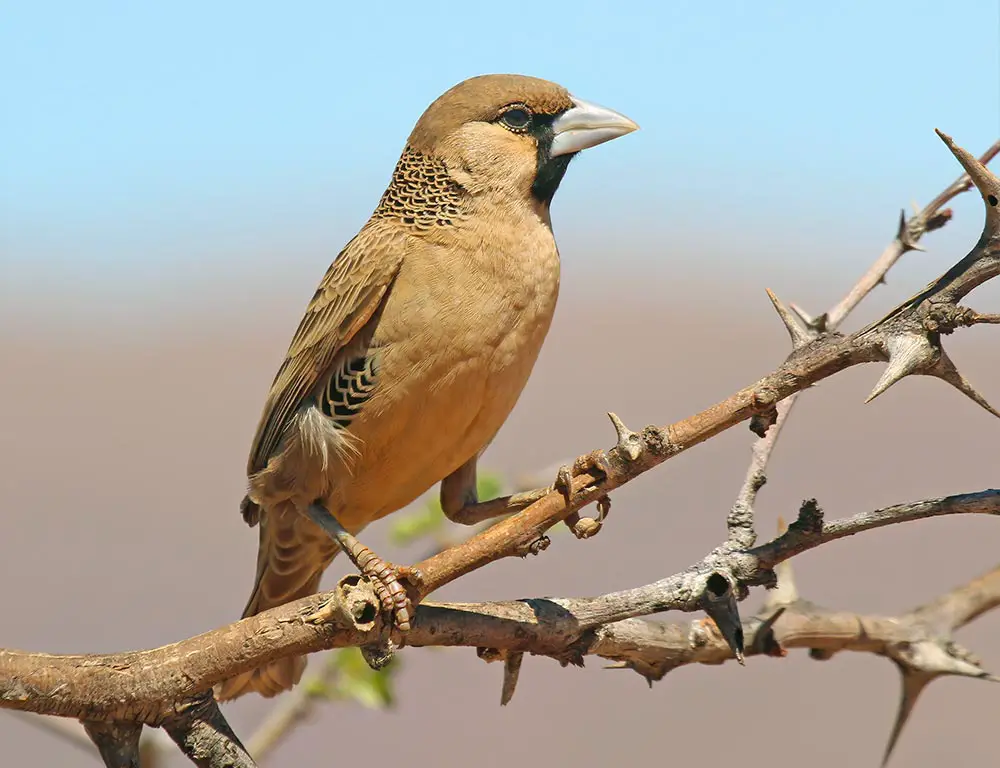
- Scientific name: Philetairus socius
- Life span: 7-10 years
- Size: 15-17 cm
- Weight: 20-40 grams
- Wingspan: 25-30 cm
- Status: Least Concern
Sociable Weavers are known for their communal nests, which are among the largest built by any bird species.
These nests house multiple pairs and generations, creating a complex social structure. Sociable Weavers primarily feed on seeds and insects.
Their nests protect them from predators and harsh weather conditions. Living in arid regions, these weavers are adapted to harsh environments and rely on the cooperative efforts within their colonies for survival.
These nests, constructed with sticks and grass, can house hundreds of birds. Sociable Weavers are well-adapted to arid environments and are known for their cooperative breeding behavior and intricate nest-building techniques.
4. Red-billed Buffalo Weaver (Bubalornis niger)
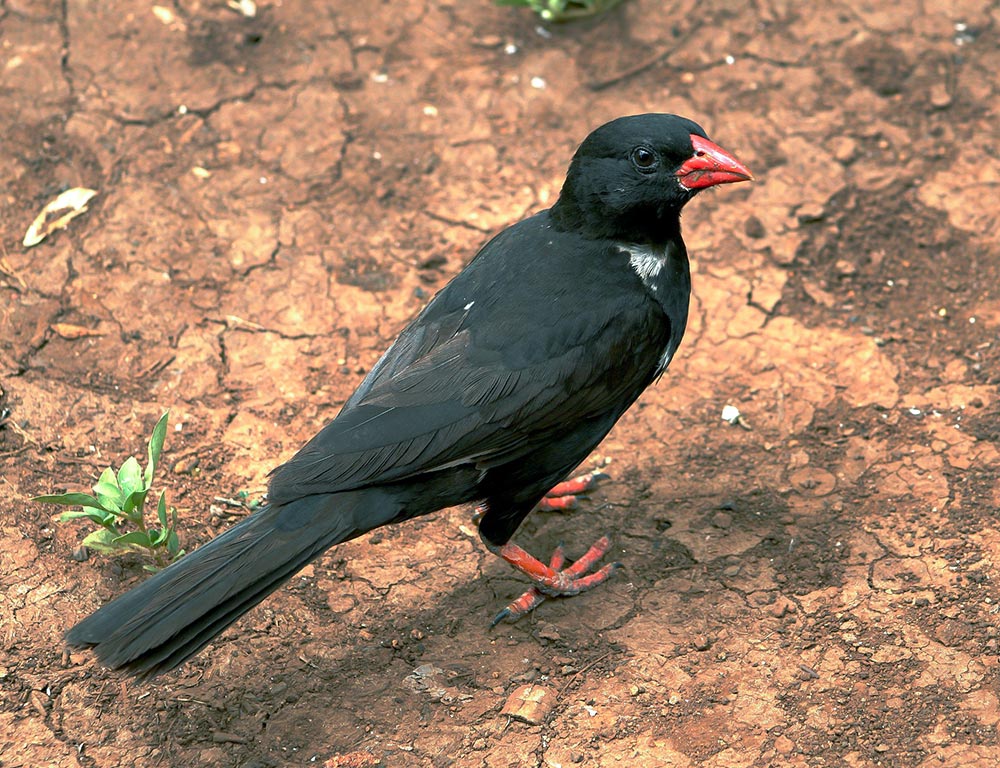
- Scientific name: Bubalornis niger
- Life span: 6-8 years
- Size: 23-25 cm
- Weight: 70-90 grams
- Wingspan: Approximately 40 cm
- Status: Least Concern
Red-billed Buffalo Weavers are distinctive birds with a red bill, white wings, and a black body.
They are highly social and live in cooperative groups. Their nests are large and made of thorny branches, protecting from predators.
These weavers are omnivorous, feeding on a variety of insects, fruits, and seeds. They forage on the ground in open areas, often near water sources.
Classified as “Least Concern,” these weavers exhibit striking black plumage with a red bill. They are often seen in large, noisy colonies, constructing messy, communal nests in acacia trees or thorny bushes.
5. Lesser Masked Weaver (Ploceus intermedius)
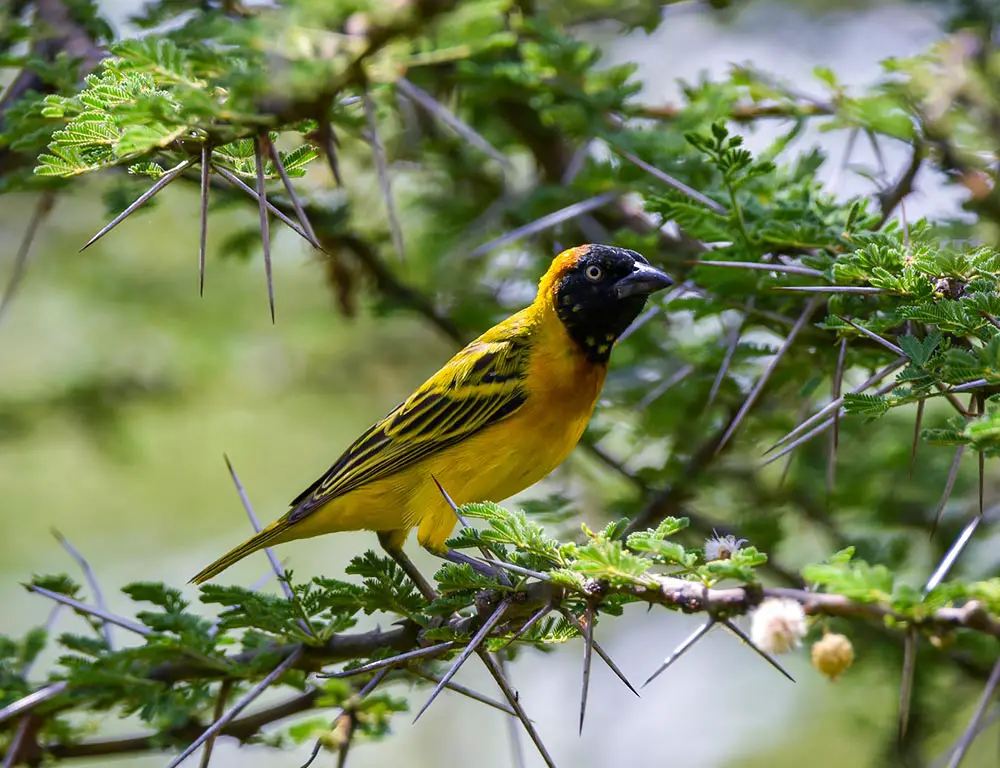
- Scientific name: Ploceus intermedius
- Life span: 5-7 years
- Size: 11-13 cm
- Weight: 15-25 grams
- Wingspan: 18-20 cm
- Status: Least Concern
Lesser Masked Weavers are small, colorful birds with distinctive facial markings during the breeding season. Males build intricate nests to attract females.
These weavers are commonly found in savannas and grasslands. Their diet consists mainly of insects and seeds. Lesser Masked Weavers are known for their agility and acrobatic displays during courtship.
Classified as “Least Concern,” males exhibit vibrant yellow and black plumage during the breeding season. These weavers are known for their intricate and finely woven nests, typically suspended from the tips of branches in colonies.
6. Red-headed Weaver (Anaplectes melanotis):
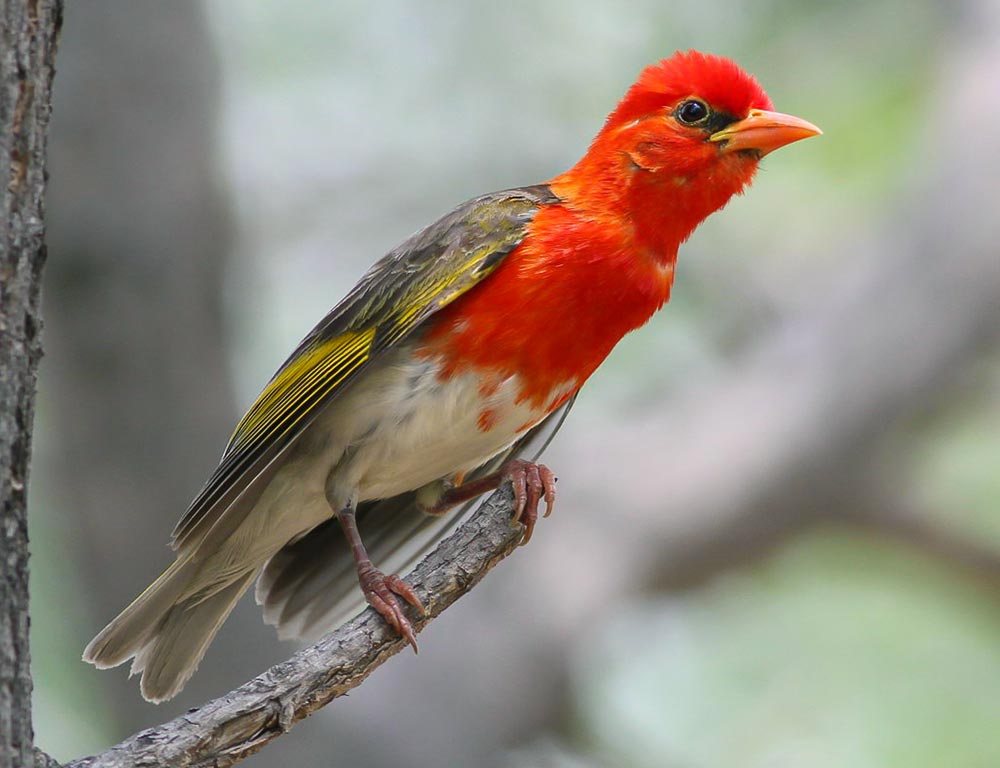
- Scientific name: Anaplectes melanotis
- Life span: 5-7 years
- Size: 15-18 cm
- Weight: 20-30 grams
- Wingspan: Approximately 25 cm
- Status: Least Concern
Red-headed Weavers are small birds with striking redheads and upperparts, making them easily identifiable. They are typically found in grassy habitats and open woodlands.
These weavers construct hanging nests from the branches of trees. Red-headed Weavers primarily feed on seeds and insects. During the breeding season, males engage in displays to attract females, showcasing their vibrant plumage.
They build intricate, globular nests typically situated at the end of thin branches, and like many weavers, they are social birds often found in colonies.
7. Dark-backed Weaver (Ploceus bicolor)

- Scientific name: Ploceus bicolor
- Life span: 5-7 years
- Size: 15-18 cm
- Weight: 20-30 grams
- Wingspan: Approximately 25 cm
- Status: Least Concern
The Dark-backed Weaver, scientifically known as Ploceus bicolor, is a medium-sized bird native to South Africa.
With a lifespan of 5-7 years, they measure 15-18 cm in size and weigh between 20 to 30 grams. Their wingspan is approximately 25 cm.
Classified as “Least Concern,” these weavers are characterized by a dark brown or black back and striking yellow plumage during the breeding season.
They construct intricate, hanging nests from grass and twigs, typically situated in trees or bushes. Dark-backed Weavers are known for their agility and dexterity in weaving, creating elaborate structures with finesse.
8. Southern Masked Weaver (Ploceus velatus)
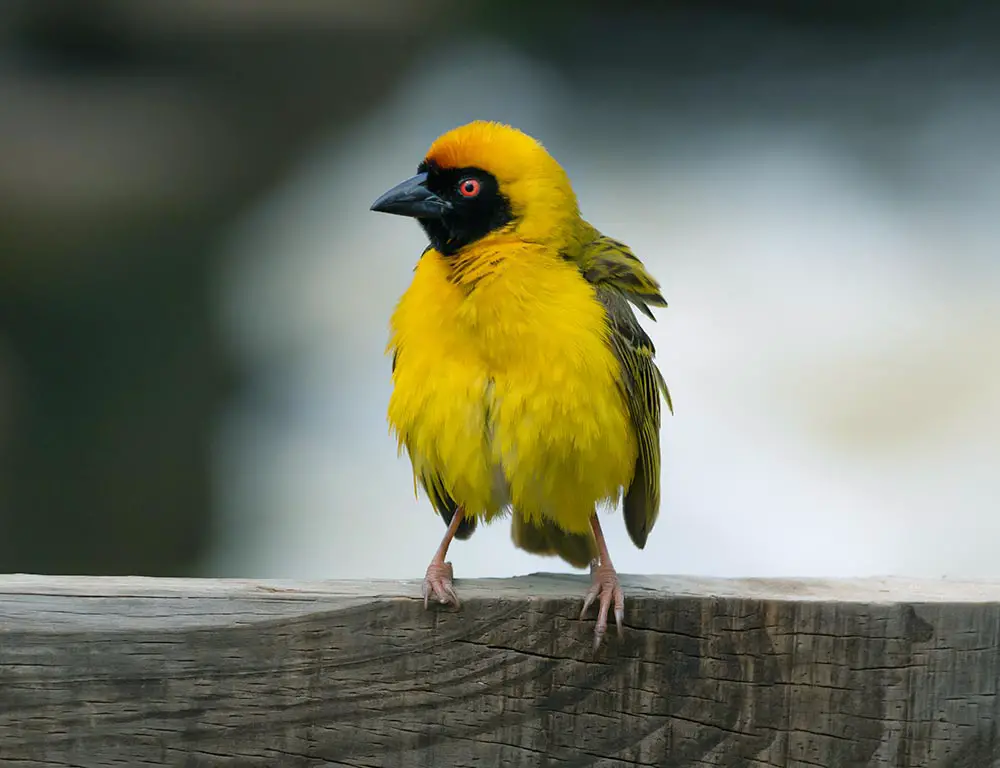
- Scientific name: Ploceus velatus
- Life span: 5-7 years
- Size: 11-14 cm
- Weight: 15-25 grams
- Wingspan: Approximately 20 cm
- Status: Least Concern
The Southern Masked Weaver, scientifically identified as Ploceus velatus, is a small and vibrant bird species native to South Africa.
With a life expectancy of 5-7 years, they measure 11-14 cm in size and weigh between 15 to 25 grams. Their wingspan is approximately 20 cm.
Classified as “Least Concern,” males exhibit striking yellow and black plumage during the breeding season. Southern Masked Weavers are known for their skillful nest-building, creating elaborate woven structures with long entrance tubes.
These nests are often constructed in colonies, hanging from the branches of trees or other suitable structures.
9. Eastern Golden (Yellow) Weaver (Ploceus subaureus)
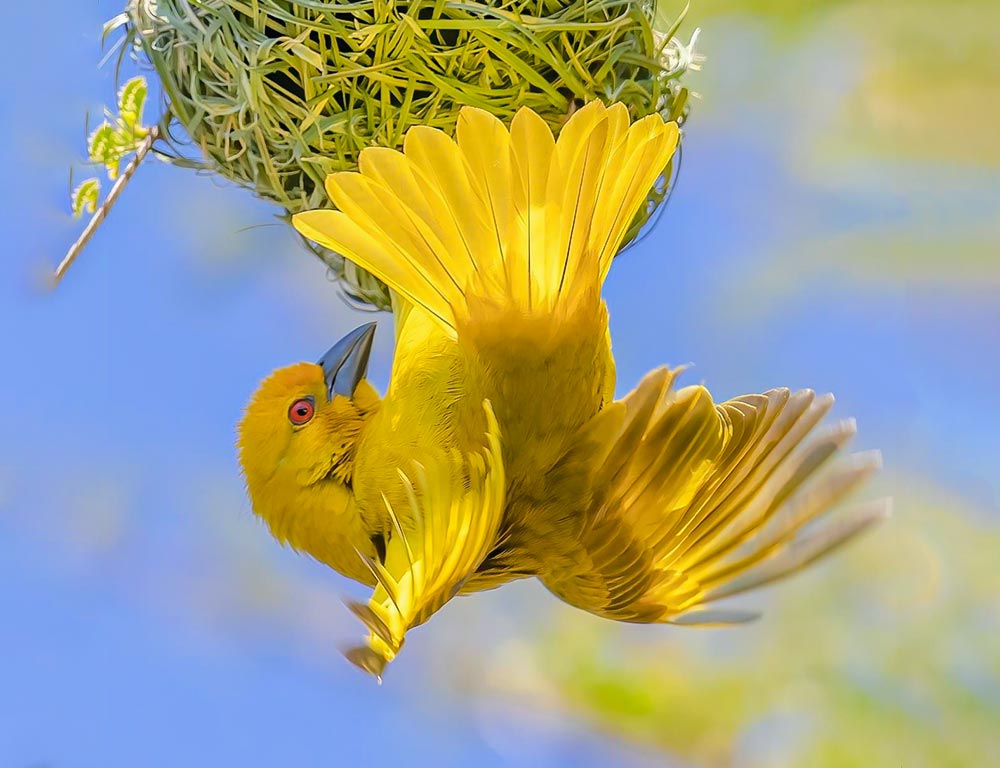
- Scientific name: Ploceus subaureus
- Life span: Not specified
- Size: 12-15 cm
- Weight: Not specified
- Wingspan: Not specified
- Status: Least Concern (IUCN)
The Eastern Golden Weaver, also known as the Eastern Golden Yellow Weaver, is a small and brightly colored bird with striking yellow plumage.
These weavers are found in a variety of habitats, including woodlands, grasslands, and gardens, across eastern Africa.
Males display vibrant yellow breeding plumage during the mating season, and they are known for their skill in nest-building.
Eastern Golden Weavers are renowned for their intricately woven, pendant-shaped nests that hang from the tips of branches. These nests are made from grass and other plant materials, and the males construct them to attract females.
The diet of these weavers consists mainly of seeds and insects. They are often observed foraging in trees and bushes for food.
10. Spectacled Weaver (Ploceus ocularis)
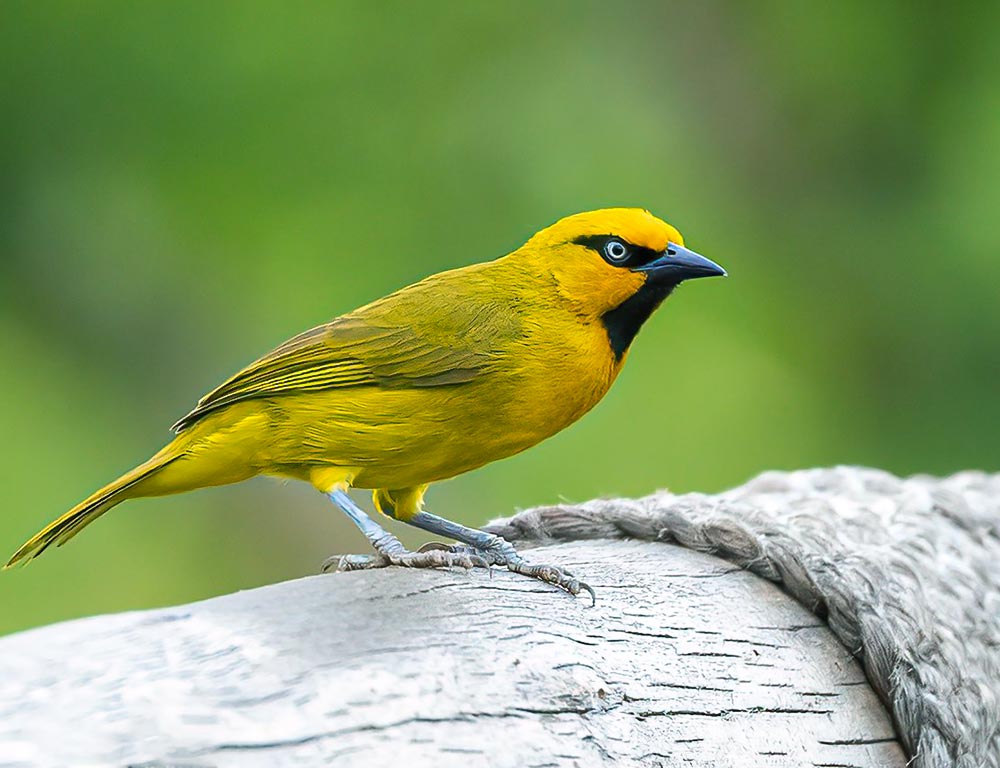
- Scientific name: Ploceus ocularis
- Life span: Not specified
- Size: Approximately 15-17 cm
- Weight: Not specified
- Wingspan: Not specified
- Status: Least Concern (IUCN)
Spectacled Weavers are small, striking birds known for their distinctive facial markings, resembling “spectacles” or eyeglasses. Found in various habitats, including savannas, woodlands, and grasslands, these weavers are native to parts of southern Africa.
Males in breeding plumage exhibit bright yellow coloring on their underparts, contrasting with their blackish wings and backs.
They are proficient nest builders, creating intricate hanging nests from grass and other plant materials. The nests often have a tubular entrance, providing shelter from predators.
In terms of behavior, Spectacled Weavers are social birds, often found in colonies. Their diet consists mainly of seeds and insects, and they forage actively in trees and bushes.
During the breeding season, males engage in displays to attract females, showcasing their vibrant plumage and skillfully crafted nests.
11. Holub’s Golden Weaver (Ploceus xanthops)
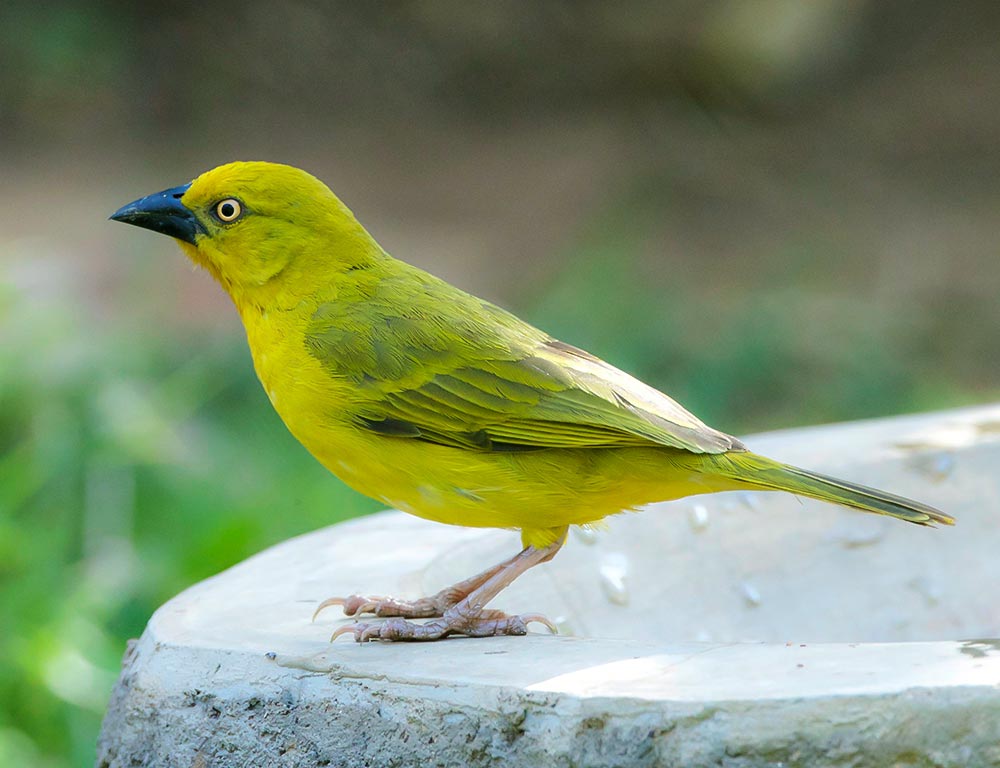
- Scientific name: Ploceus xanthops
- Life span: Not specified
- Size: Approximately 15-17 cm
- Weight: Not specified
- Wingspan: Not specified
- Status: Least Concern (IUCN)
Holub’s Golden Weaver is a small, colorful bird native to parts of eastern and southern Africa.
These weavers are known for their vibrant plumage, characterized by bright yellow coloring on their underparts, contrasting with an olive-green back. The males, especially during the breeding season, exhibit striking golden-yellow heads.
These weavers are skilled in constructing intricate, hanging nests from grass and other plant materials. The nests are typically located in trees and are designed with a tubular entrance.
Holub’s Golden Weavers are often found in savannas, grasslands, and woodlands, and they prefer areas near water sources.
Their diet primarily consists of seeds and insects, and they actively forage in trees and bushes. Holub’s Golden Weavers contribute to the biodiversity of their ecosystems with their colorful presence and elaborate nest-building skills.
Wrapping Up
The weavers of South Africa present a captivating tapestry of avian diversity that adds vibrancy to the region’s ecosystems.
From the meticulously crafted nests of the Cape Weaver to the social intricacies of the Sociable Weaver colonies, these birds showcase nature’s ingenuity.
Their remarkable adaptations to various habitats, whether the dense grasslands or open woodlands underscore their resilience and ability to thrive in diverse environments.
Each weaver species contributes its unique hues to the avian palette, with plumage ranging from the bright yellow of the Spectacled Weaver to the striking redhead of the Red-headed Weaver.
The diversity in their nesting strategies, feeding behaviors, and social structures adds depth to the ecological story of South Africa.